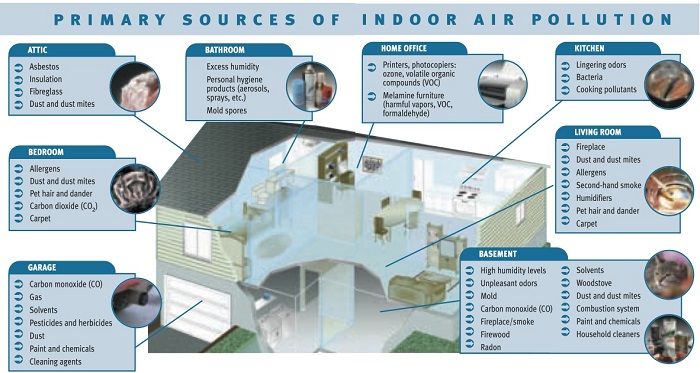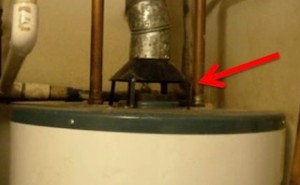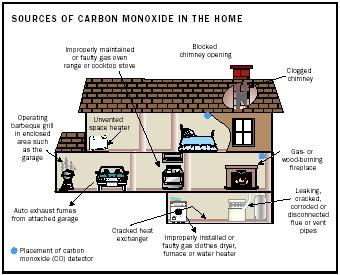Reducing Indoor Air Pollution
Indoor-air is invisible. People involved in buying, improving and building homes are more interested in the tangibles like location, style and finishes. More people are beginning to recognize the impact of Indoor-Air Quality IAQ on personal health. Health concerns like IAQ benefit most from a holistic approach.

Pollution sources are everywhere. The best way to reduce pollution is to eliminate the source. It's impossible to eliminate all sources.
These three steps apply to new and existing homes. For those building new, start the process with a careful examination of the building envelope design.
3* Main Steps to Improved Indoor Air Quality IAQ in Residential Construction:
1. Choose materials that limit harmful off-gassing and finishes that are easy to clean.
examples: No VOC paint, floor trusses instead of TJIs to reduce glues in engineered wood. Reduce or eliminate carpeting.
2. Positive influence on occupant behavior.

Reducing indoor combustion appliance use, incense, and candles. Use bath fans for humidity control, and kitchen vent hoods for reducing the many forms of pollution from stovetops, especially gas stovetops. Maintain or convert vented crawlspaces into unvented crawlspaces.
3. Provide Outdoor-Air with passive or active ventilation.

Outdoor-Air Ventilation is replacing indoor-air with outdoor-air. Use systems with a fan, also referred to as active and mechanical ventilation. With favorable weather, windows are a good form of passive ventilation for the right occupants. Air-infiltration and earthtubes are passive but have less control and add pollution risks. For the best indoor-air quality, indoor air needs to be exchanged with outdoor-air.
*Building Envelope Encompasses All
It dictates pollution sources: Radon, humid-air flow, and air from unwanted locations like the crawlspace, garage, attic or wall cavities. Existing homes benefit from building envelope improvements by a qualified home performance contractor. Those building new homes need to be implementing international level code minimums of building envelope quality, while assuring design details like attics, crawlspaces and garages reduce risk of contamination.
Some construction products emit harmful substances like formaldehyde and Volatile Organic Compounds VOCs. There are many options and alternatives available that can reduce exposure. Safer materials associated with electrical, plumbing and appliances can substantially increase upfront costs and complication. Finding alternatives for some things, only makes sense for those with hyper sensitivities. 
Its difficult eliminating all offending construction materials and according to NIOSH, they account for only 4% of most home's problems. Interior furnishings, appliances, electronics and stovetops often overshadow most common building materials. Microscope materials after ventilation is addressed.
Outdoor-air is more important than building materials.
Research suggests that outdoor-air ventilation paired with airtight building envelopes offer the most measuable improvements for IAQ. Outdoor air is almost always cleaner than indoor air. It is a good thing to reduce harmful materials and finishes but most research involving improved measurements of reducing indoor air pollutants, is focused on ventilation rates of outdoor-air.
Be a control freak
Controlling air is good. Having control over conditioned air and fresh air should be among the top goals of homeowners, designers and builders. This is the essence of blower door proven airtightness. The more leaky and drafty a home, the less control of conditioned air (high energy and environmental costs), delivery of fresh outdoor air and exhaust of polluted indoor-air. By building tight, we gain more control of these air concerns and it helps prevent humid-air flowing through building cavities which is a recipe for mold and mildew in hidden places.
Be conservative and extremely careful with combustion appliances: Fireplace, woodstove, any appliance fueled by gas
The best way to eliminate risks from combustion appliances is to avoid them altogether. All-electric homes have less risk of indoor-air pollution.

Eliminate atmospherically vented appliances and especially vent-free fireplaces. Power vented and direct vented combustion appliances need to be meticulously installed and regularly inspected. Even a properly installed, power vented appliance can eventually be a source for indoor air pollution.

Consider an Induction cooktop.
Due to the cooler surfaces of the glass cooktop, they have better indoor air quality than conventional electric cooktops. Gas cooktops have the worst IAQ. Down draft vent hoods require special care in layout and installation and rarely perform as well as overhead. Vent hood capture efficiency is one area researchers are finding measurable improvements. The variables are vertical height from stovetop to vent hood and the area of the hood around the cooktop. Dr Joe's First deal with the manure article has good technical information.

Avoid parking the car in your house.
 Dangers of Attached Garages need to be addressed. Detached garages are the best. The more attached the garage, the greater the risk. There are strategies available for dealing with the dangers of attached garages but its always risky when a garage shares a wall with the home. There have been many cases of death from automobiles left running in a garage and many more undiagnosed cases of Carbon Monoxide poisoning.
Dangers of Attached Garages need to be addressed. Detached garages are the best. The more attached the garage, the greater the risk. There are strategies available for dealing with the dangers of attached garages but its always risky when a garage shares a wall with the home. There have been many cases of death from automobiles left running in a garage and many more undiagnosed cases of Carbon Monoxide poisoning.
Avoiding attached garages and combustion appliances inside the building envelope is an easy way to eliminate indoor air pollution sources.
Air-tight building envelopes and mechanical outdoor-air ventilation gives us control over the where, when and how air moves in our homes.
WHERE
Providing fresh air introduction is easier when we know exactly where it is going and coming from. A leaky basement or sub-floor can introduce radon, excess moisture and mold spores. A drafty attic can bring in hot temperatures and outdoor humidity. Humid air leaking through random cracks in the building envelope can cause mold growth inside walls and other hidden building cavities.
WHEN
We can also control when the building breathes. In extreme weather or times of high pollen, turning down the ventilation might be better. During times of kitchen use; cooking odors and smoke, dialing up the ventilation can help clear the air quicker.
HOW
How we provide the ventilation is where things get more interesting. ASHRAE 62.2 provides the minimum ventilation requirements that international building codes recognize. There are many strategies and variables to consider in a well designed ventilation system for new home construction.
Building tight and providing outdoor-air ventilation at rates specified in standards like ASHRAE 62.2 are among the most research-proven measures we can take for reducing indoor-air pollution.
 Indoor Air Quality Understanding ASHRAE 62.2
Indoor Air Quality Understanding ASHRAE 62.2  Vented-Crawlspaces Should Be Illegal.
Vented-Crawlspaces Should Be Illegal. .jpg) Dangers of Attached Garages
Dangers of Attached Garages
Springtime Builders are Asheville NC custom builders specializing in holistic homebuilding craftsmanship.

